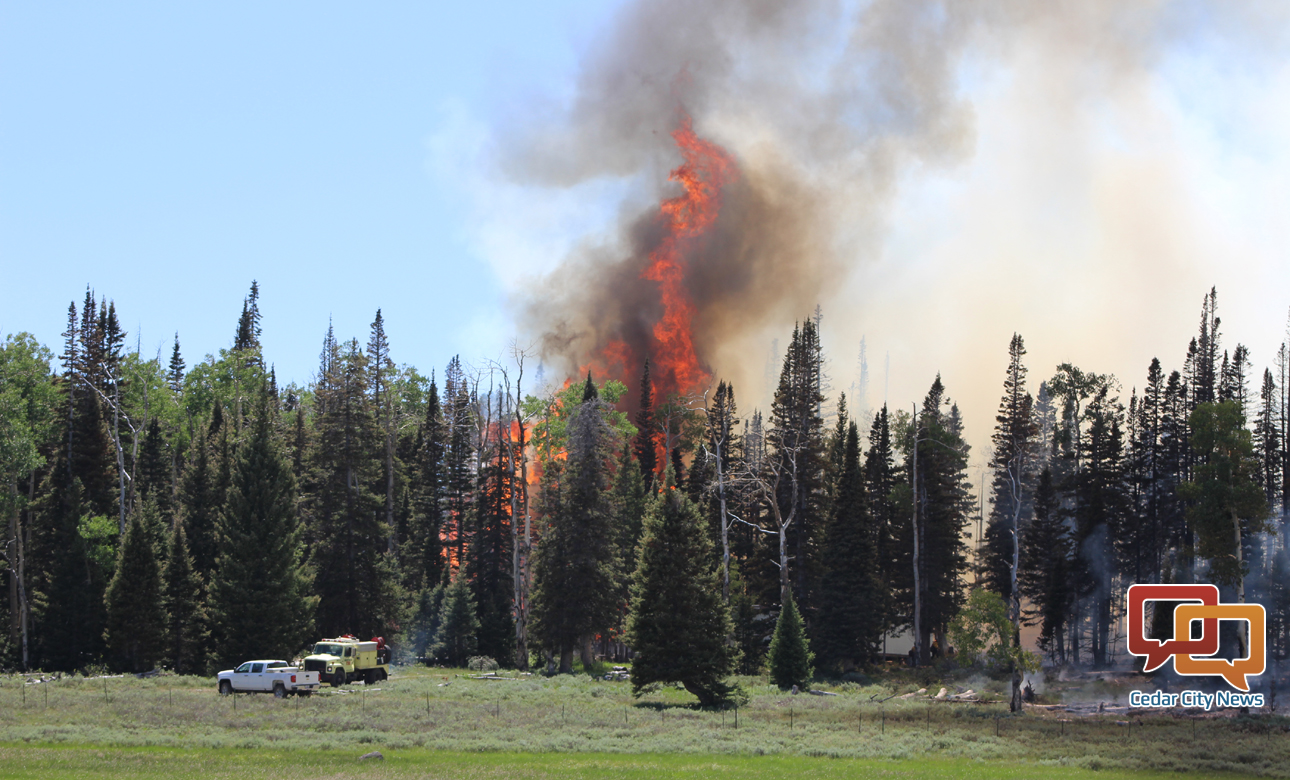
ST. GEORGE — Anyone who has lived in Southern Utah long enough – and considering the 2017 Brian Head Fire, this would only be about a year – should know that the best way to keep from being cited or even sparking a wildfire is to understand the laws behind controlled burn season.
Adam Heyder, Washington County fire warden, said there are many who don’t understand the laws, adding that they can get “pretty convoluted.”
Different types of controlled burns
Some people get confused about the different types of controlled burns, Heyder said.
Controlled burns in the spring are only permitted between March 1 and May 30, and then again in the fall between Sept. 15 and Nov. 15.
Residential burn permits are required every day the burning is planned to take place, and are restricted to weeds, leaves and limbs from small trees or bushes. Residential burn rules may differ between cities and different homeowners associations’ rules. In St. George, the fire department has to inspect what is being burned before a controlled burn permit is issued.
There are also agricultural burns permitted, which is where people can burn plants on farmlands, or along canals or irrigation ditches. In St. George, agricultural burns may happen outside the controlled burn windows after notifying the fire department, Heyder said.
Developmental burning, or burning structures, is never allowed.
Consequences of not following the rules
Neglecting to obtain a controlled burn permit can have disastrous consequences, Heyder said.

In the case of last year’s Brian Head fire – which burned more than 70,000 acres – a man was accused of burning weeds on his property without a burn permit. The fire exploded in size, torched 13 homes and burned through an estimated $34 million in firefighting costs to put it out.
Read more: Taylorsville man accused of starting Brian Head fire pleads not guilty
“When there is a large amount of dry fuel in the area, like there was before the Brian Head fire, there will eventually be a fire, whether it’s started by humans or otherwise,” Heyder said.
Other rules
Even if a fire doesn’t get out of control, people can still be cited for neglecting to obtain a burn permit.
But even if it is controlled burn season, there are days when burns can still be illegal because of the weather, Heyder said. If the National Weather Service has a red flag warning or is reporting the air clearing index is below 500, controlled burns are not permitted. This index indicates how “heavy” the air is, Heyder said.
“Most people are OK with a little smoke, but when the (air clearing index) gets too low, the smoke starts to linger in the area longer, which affects the air quality,” Heyder said.
Burning trash, construction debris or weeds across a large field is not allowed for any type of controlled burn. Burn piles must be small and attended at all times with a water supply. It also has to be done by sundown.
For more information on controlled burn permits or to apply for one in Washington County, click here. For Iron County, click here.
Email: [email protected]
Twitter: @STGnews | @SpencerRicks
Copyright St. George News, SaintGeorgeUtah.com LLC, 2018, all rights reserved.
Open Burn!